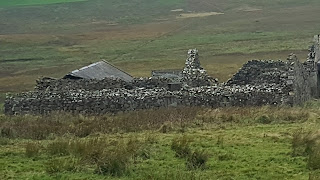‘Ramayana’,
the older and one of the two great epics of India along-with Mahabharata was
created by the sage Valmiki in Sanskrit language. Historians established the
period of its creation to be something between 7th to 4th
Century BCE. The entire epic was written in verses, in the form of shlokas.
The epic narrated the story of King Rama the 7th incarnation of
Lord Vishnu and his consort Sita through the cycle of their life in twenty four
thousand verses, five hundred chapters and seven Kand (segments). This literary genius not
only described the political incidents of Rama’s fourteen years of exile and
his battle with Ravana the Lanka King, but also portrayed philosophy of ideal relationships,
be it a husband, a brother, a wife or an ally. This epic had travelled through
time and geographical locations and became ageless; people not only loved and
idolised it, but also adapted it in varied social and religious teachings. In
India, Ramayana is equally popular today, as it was a thousand years before;
even in other streams of religious belief than Hinduism it had been adapted.
Buddhist literature ‘Dasaratha Jataka, Jain literature ‘Salakapurusa’ and portrayal
of Ramayana in Sikh Holy scripture ‘Guru Granth Sahib’ are few examples of it.
The
influence of Indian culture and religion on the South East Asian countries are
evident from the historical ruins, relics from past and in their social and
religious customs. This process started with the sea trade from India as early
as 1st Century CE. Along-with Indian culture and religion, Ramayana
also travelled and eventually became part of South East Asian culture;
beautifully blended in the ethos of respective societies. As a result, we get different
variations of Ramayana in Cambodia, Indonesia, Laos, Myanmar, Malaysia, Vietnam,
Philippines and Thailand.
Ramayana
in Thailand is known as Ramakien. The original scriptures of the same were all
destroyed during the siege of Ayutthaya by Burmese Army in the year 1767 and
with that the history of it. During the reign of King Rama1 the modern version
of Ramakien was written; it is believed that the King, reputed for his poetic
skill, himself contributed in few of the chapters. Then later, King Rama II
modified the version to shape it into Khon form of theatre. This version is
still immensely popular in Thailand and globally. So much is the strength of
this particular form, in terms of grandeur, tradition and skill that UNESCO has
recently recognised it as ‘Intangible Cultural Heritage’.
Khon
theatre, initially a court performance in Ayutthaya era had always been
patronised by the Royal family. The performers wear imposing masks and delicately
designed dresses and accessories; the sets are grand in terms of magnificence
and detailing. The fabric of the dresses till date comes from Surat, India and
then they are worked upon with intricate designs. The accessories are designed
in a way that actors feel comfortable in them while performing. The performers
take training from the tender age of thirteen for many years. The male actors
are categorised in three types, angels, demons and monkeys and each one takes
training in one of those. There movements are so distinguished that interchange
of character like money playing demon or demon playing angel doesn’t happen.
The female actors, Phra Rama and Phra Lak (Lkshman) don’t wear masks. The
performances are more oriented on gestures and body movements than dialogues.
The movements are slow and graceful; gestures are so prominent that it can be
easily identified with specific characters. The accessories like headdresses
and weapons also direct to the characters and even their ranks. There is live
music with traditional instruments and vocal singers; dialogues are also
delivered live by skilled vocalists. Ramakein performances take place in
different occasions in different parts of Thailand throughout the year.
‘The
allegiance of Phiphek’ is a portion of Ramakien where Ravana’s (Tasakanth in
Thai) brother Bibhishan (Phiphek in Thai) gets banished from the court of Lanka
and joins Lord Rama showing his allegiance towards him; he also helps Rama to
win the war against Ravana.
Like
every year, this show is being performed from the beginning of November in
Thailand Cultural Centre, Bangkok for a month. I had the opportunity to watch
the show this year. It was a two and half hour long show with a short interval
in between. The language was Thai, hence, not intelligible to foreigners like
us and there were many Non Thai audience. But every scene was described in
English on two digital screens placed on the sides of the stage; the
intricacies of dialogues were out of our reach, but the actors brought them
live with delicate gestures. We managed to laugh at jokes cracked in Thai, without
getting even a single word; such was the power of the performances. The grandeur
of the set of Lanka court, the detailing of Phiphek’s house or Taskanth’s
bedroom can easily put to shame a big budget period film.
 |
| The Curtain Call |
 |
| Khon Masks in National Museum |
 |
| Traditional Music Instruments in National Museum |
 |
| The overwhelmed au |
 |
| A female Artist |
 |
| The Live Music |
 |
| The hall Entrance |
 |
| The Entrance |
Those two and half hours passed in a trance without even realising the time. I wanted to interact with a few of the actors after the show as they were moving towards the dressing room, they obliged. A week later I attended a lecture in National Museum where Dr. Surat Jongda, one of the Khon art exponents gave lecture on the subject. That further added to my experience on the performance. This is surely one of the treasures I have collected during my stay in Thailand and would preserve fondly in my memory.
***
Copyright (c)ananyapal2018 ALL RIGHT RESERVED






















































